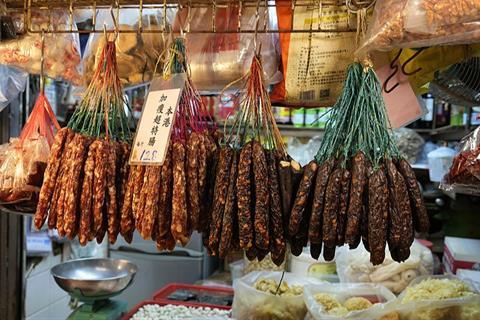A research team has reviewed the process of gel formation in fermented sausages, emphasizing the crucial role of myofibrillar proteins and the influence of lactic acid bacteria, temperature, and processing methods on gel properties. They highlighted that while current studies extensively explore protein gel properties, the specific mechanisms by which lactic acid bacteria enhance these properties in fermented sausages are less understood.

Future research is suggested to employ advanced spectroscopic methods to delve deeper into these mechanisms, potentially improving the texture and flavor of these products and advancing food science applications.
Fermented sausages, made from microbial fermentation of meat, are renowned for their distinct flavors and textures . It is primarily influenced by the gel properties of meat myofibrillar proteins, which form stable gel structures through collagen denaturation. Current research comprehensively addresses the gel properties of muscle proteins and meat paste, yet the factors influencing gel formation in fermented sausages, such as microbial diversity, processing techniques, and environmental conditions, require further investigation.
Gel formation
A study (DOI: 10.48130/fmr-0023-0042) published in Food Material Research on 01 February 2024, delves into the mechanisms of gel formation in fermented sausages to enhance texture and quality, providing a robust theoretical framework for future improvements in sausage production.
This review comprehensively discusses the mechanisms of gel formation in fermented sausage, analyzing the impact of lactic acid bacteria, temperature, and other factors on gel properties. It introduces the methodologies used to evaluate these properties, aiming to establish a basis for the control of process parameters and enhancing the gel quality in fermented sausage production.
In exploring gel formation, the review highlights that microorganisms play a critical role during fermentation by producing enzymes that facilitate the breakdown of proteins and fats, release flavor compounds and lower the sausage’s pH through lactic acid production. This acidification leads to protein denaturation, which promotes gel formation. Specifically, myosinis critical in the development of gel matrix through denaturation, aggregation and network formation, ultimately stabilizing the gel structure by preventing fat particle aggregation and free radical penetration.
Lactic acid bacteria
Quantitative findings include that lactic acid bacteria enhance gel strength, elasticity and juiciness by lowering pH and increasing ionic strength, with organic acids such as lactic and formic acid significantly accelerating ion concentration, thus promoting actomyosin formation.
The review also notes that optimal gel properties are achieved when myofibrillar proteins are treated at specific temperatures, with 70°C identified as ideal for creating a uniform network structure. Advanced imaging techniques such as Scanning Electron Microscopy (SEM) and Confocal Laser Scanning Optical Microscopy (CLSM) are critical in characterizing these microstructures, providing a detailed understanding of the interactions within the gel matrix.
According to the study’s lead researcher, Prof. Xinliang Wang, “The ability of lactic acid bacteria to produce acid, enzyme, extracellular polysaccharide and antioxidant properties play an important role in the formation of fermented sausage gel properties. In addition, the gel properties of fermented sausages are also closely related to various factors such as temperature and processing methods.” Overall, the review underscores the complexity of factors influencing gel properties in fermented sausages and the sophisticated methods required to analyze and optimize them.







No comments yet